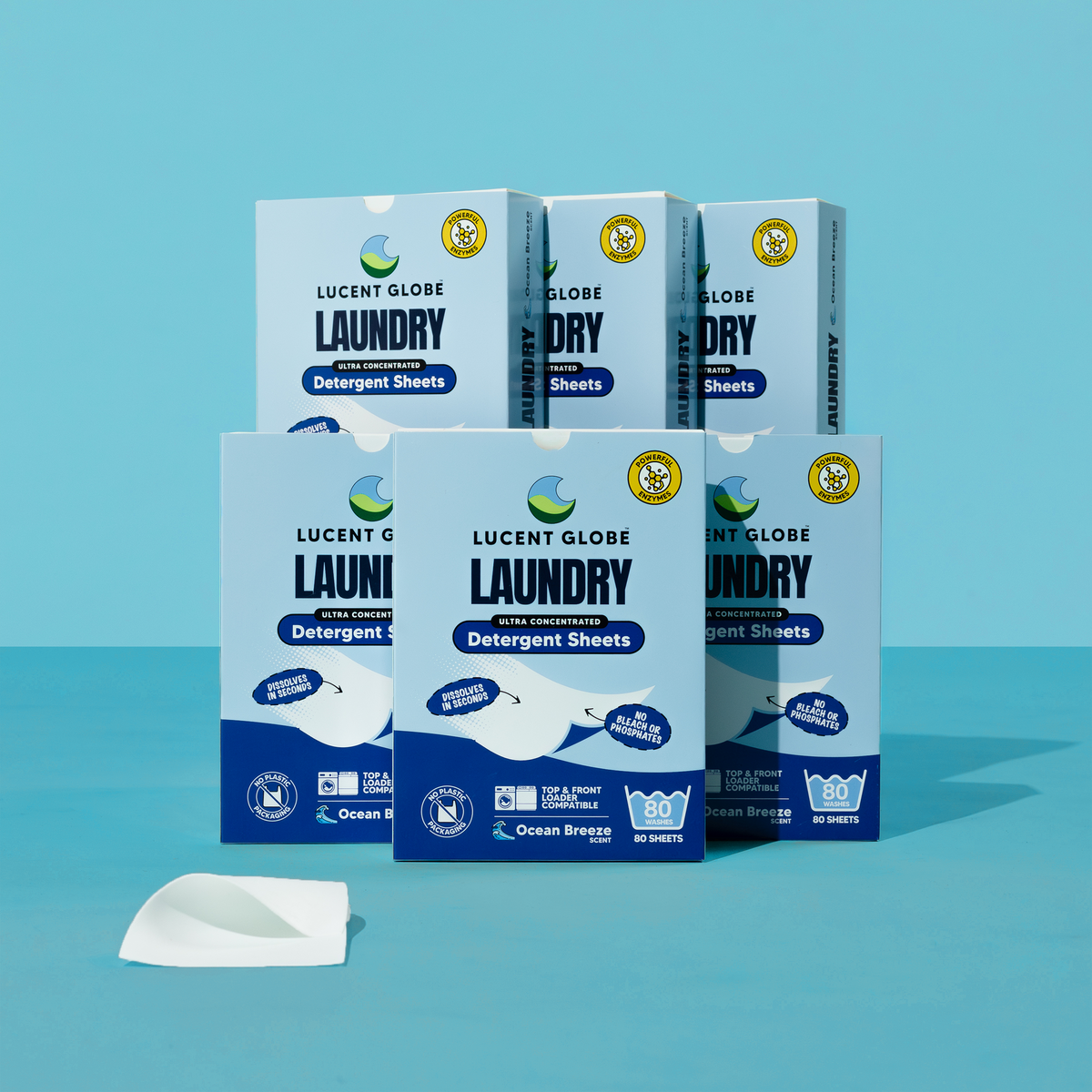Guide to Washing Machine Temperatures
- by Brodie Cook

Why Washing Machine Temperature Matters
Choosing the right washing temperature for your laundry is more important than you might think. The temperature you select directly impacts how clean your clothes get, how long they last, and even how much energy you use. If the water is too hot, it can cause colours to fade and fabrics to shrink, leaving your favourite clothes looking worn out too soon. On the other hand, if the water is too cold, it might not effectively remove dirt and stains, especially from heavily soiled items.
Beyond just fabric care, water temperature also plays a role in your household’s energy consumption. Hot water requires more energy to heat, which can increase your utility bills.
When to Use Hot Water

Hot water in your washing machine typically ranges from 54°C to 60°C (130°F to 140°F). It’s the go-to choice for items that need thorough cleaning and sanitizing.
Here’s when to use hot water:
- White cotton fabrics: Like t-shirts, bed sheets, and towels. Hot water helps keep them bright and clean.
- Heavily soiled items: Clothes with dirt, sweat, or grease stains benefit from the high temperature.
- Baby cloth diapers: Hot water is effective at killing bacteria and removing tough stains.
- Sickbed linens: If someone is ill, washing their linens in hot water can help eliminate germs.
- Kitchen towels and dishcloths: These often harbour bacteria, so a hot wash ensures they’re properly sanitized.
Hot water is powerful but can be harsh on fabrics. It may cause shrinkage, fading, or damage to delicate materials. Always check the care label first to make sure your items can handle the heat.
The Best Uses for Warm Water

Warm water, usually between 32°C to 43°C (90°F and 110°F), is a versatile option for most of your laundry needs. It strikes a balance between cleaning power and fabric care, making it suitable for a wide range of fabrics.
Here’s when to use warm water:
- Synthetic fabrics: Clothes made from polyester, nylon, spandex, and blends respond well to warm water. It helps remove dirt and oils without causing shrinkage or fading.
- Coloured clothes: Warm water is ideal for washing light to medium colours. It cleans effectively while helping to preserve the vibrancy of the fabric.
- Everyday wear: Items like jeans, t-shirts, and activewear benefit from warm water. It’s gentle enough to prevent excessive wear and tear but still strong enough to tackle everyday grime.
- Permanent press items: Garments labelled as permanent press, such as dress shirts and slacks, do well in warm water. It reduces wrinkles and maintains their shape.
- Moderately soiled fabrics: For clothes that are slightly dirty but don’t require intense cleaning, warm water is the perfect middle ground.
Using warm water is an excellent choice when you want to balance effective cleaning with minimal damage. It helps dissolve detergents better than cold water, making it more effective at lifting stains and odours. At the same time, it’s gentler on fabrics than hot water, reducing the risk of shrinking, fading, or wrinkling your clothes. This makes it a reliable option for everyday laundry without the worry of harming your garments.
Cold Water: The Eco-Friendly Option

Cold water, typically between 60°F and 80°F (16°C to 27°C), is the most eco-friendly option for your laundry. It uses less energy, making it a smart choice for both the environment and your utility bills.
Here’s when to use cold water:
- Delicate fabrics: Items like silk, wool, and lace are best washed in a cold wash to prevent damage. It’s gentle on fibres, helping to preserve the shape and softness of these delicate materials.
- Dark and bright colours: Cold water helps prevent colours from fading or bleeding. It’s ideal for washing dark jeans, bright tops, and other vibrant clothing.
- Lightly soiled clothes can benefit from a normal wash cycle to maintain their freshness. For clothes that aren’t heavily dirty, cold water can do the job without the need for higher temperatures.
- Clothes with labels that recommend cold water: Always follow the care labels, especially when they specify cold water washing.
While cold water is gentle and energy-efficient, some worry it’s not as effective at removing stains. The key is to pretreat stains before washing. Apply a stain remover or a bit of liquid detergent directly to the stain and let it sit for a few minutes before tossing the item into the wash. For tougher stains, consider soaking the garment in cold water with detergent for a longer period.
Cold water might take a bit more effort with pretreatment, but it’s well worth it. Not only does it protect your clothes from damage, but it also significantly reduces your energy use. Plus, with modern detergents designed to work in cold water, you can still achieve a clean, fresh load without cranking up the heat.
Stain Treatment and Water Temperature: What You Need to Know
Cleans Powerfully in Any Temperature
Lucent Globe Laundry Detergent Sheets dissolve fast and deliver a deep clean in every wash. Keep colours bright and fabrics fresh without waste or harsh chemicals.
Shop Laundry Detergent SheetsWhen treating stains, start by dissolving a laundry detergent sheet in a small amount of water. This creates a concentrated solution that you can apply directly to the stain. Once dissolved, gently rub the solution into the stain, allowing it to penetrate the fabric fibres.
For tough, set-in stains like oil or grease, apply the concentrated solution and let it sit for about 10 minutes before washing the item in hot water. The heat will help to further break down the stain.
For everyday fabrics, use warm water after applying the solution. This temperature is effective for most stains while being gentle enough to protect your clothes from damage.
For delicate fabrics or protein-based stains like blood or sweat, cold water is the best choice. After applying the detergent solution, consider soaking the item in cold water before washing. This approach prevents the stain from setting and keeps delicate fibres intact.
How to Properly Sort Laundry Based on Water Temperature

Start by dividing your clothes based on fabric type, colour, and how dirty they are. This helps you choose the right water temperature for each load, ensuring your clothes are both clean and well-cared for.
Begin with fabric type. Group similar fabrics together, such as cottons with cottons and synthetics with synthetics. This prevents damage that can occur when heavy fabrics like denim rub against delicate ones like silk. Next, sort by colour. Keep darks, lights, and whites in separate piles to avoid colour bleeding. Dark colours, in particular, are best washed in cold water to prevent fading, while whites often benefit from warmer water to keep them bright.
Clothes that are very dirty should be washed separately from lightly soiled items. For instance, work clothes or active wear might require warm or hot water, while lightly worn clothes can be washed in cooler temperatures. This ensures that the dirtiest items get the thorough cleaning they need without over-washing your less dirty clothes.

 Dishwashing
Dishwashing Laundry
Laundry Bundles
Bundles Toilet
Toilet




